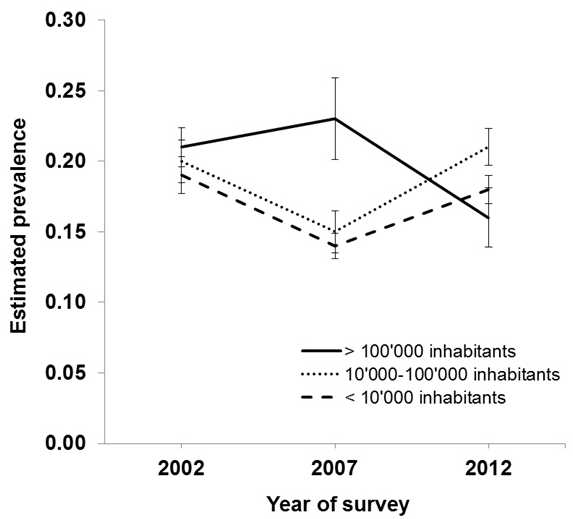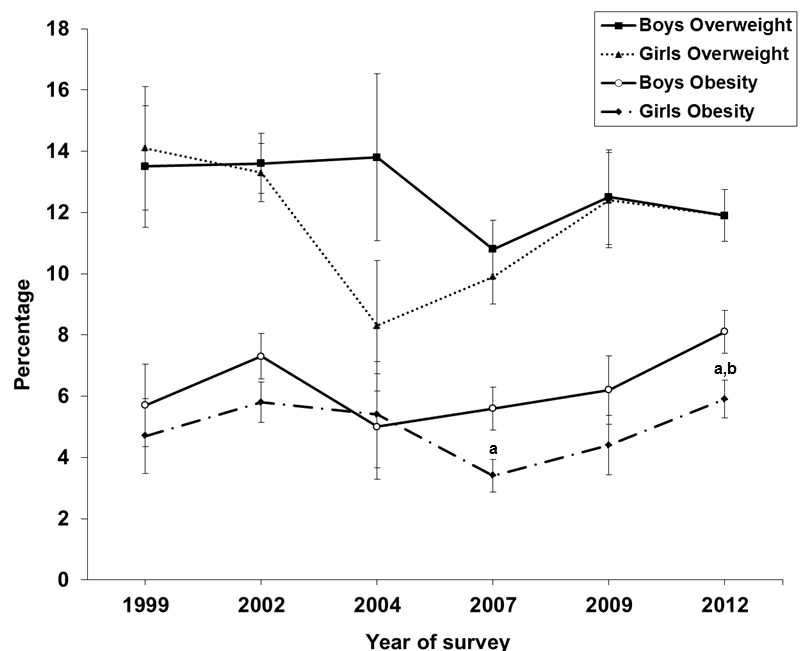Every fifth child is overweight
Researchers at ETH Zurich regularly investigate the number of overweight children in Switzerland. The latest figures have just been published. Stefanie Murer, first author of the study, explains what the figures mean.

With the support of the Federal Office of Public Health, ETH Zurich is investigating the development of overweight of children in Switzerland. When the first results were presented in 2002, there was a public outcry: compared with the regional comparative data from the 1960s and 1980s, the number of overweight children had risen by a factor of more than five. Since then, ETH Zurich researchers have collected new data every five years. Stefanie Murer and Isabelle Aeberli from the Institute of Food, Nutrition and Health have analysed the latest figures.
ETH-News: You examined about 3,000 children from 60 schools. What were your findings?
Stefanie Murer: In 2012, about 19% of children examined were overweight, with 7% actually obese. This indicates a slight increase compared with our investigation in 2007, although the proportion is practically identical to that in 2002. Of course, we had hoped that the slight decrease of 2007 would have continued. The fact that the numbers are stable and not rising is a step in the right direction. However, it is still the case that one in five children in Switzerland is overweight. These children have a higher risk of remaining overweight as adults and developing related illnesses.
When is a child seen as overweight or obese?
For adults we use the body mass index (BMI), with specific threshold values indicating the point at which a person is overweight. With children, the body make-up changes rapidly throughout their development. For example, a six-year-old boy is classified as overweight with a BMI of 17 or more; for a 10-year-old, this value is 19.25; at age 12, a BMI of 21 or more is seen as a problem for boys. Because we examined children in this age range, an absolute threshold value does not make sense, but we can use percentile curves, similar to the growth curves used for small children. We also performed skinfold measurements to determine the proportion of body fat.
What are the advantages of skinfold analysis?
The BMI does not differentiate between muscle mass and fat, and does not express anything about the distribution of fat over the body. Many studies have shown that abdominal fat plays a greater role in vascular and heart diseases than the mass of fat on arms and legs. In skinfold analysis, we measured four skinfolds on the triceps, the biceps, above the hip bone and below the shoulder blade. This involved gripping the skinfold, measuring the thickness and thus calculating the body fat proportion. However, this method also has disadvantages, because measurements are difficult and exhibit a degree of inaccuracy. However, the combination of BMI and skinfold measurements provides a very good overview.
What surprised you most about the latest figures?
That the situation in urban and rural areas seems to be developing so differently. In 2002, there were no significant differences between cities and the countryside, and in 2007 more children in cities were overweight – but in the latest study the reverse is the case. While the proportion of overweight children in urban areas has fallen by about 7%, the curve is rising in rural areas.
Do you have an explanation for what is causing these differences?
It’s possible that the prevention campaigns are more effective in cities, and also good, easily accessible facilities for overweight children are available in many cities. Additionally, there are many indications that the awareness and sensibility of parents play a major role. However, one must also consider that in our study we performed only random testing. We know from other investigations that large differences can exist between individual districts.
Are there any other peculiarities?
We established that there was a greater increase in the proportion of obese boys than of girls. Specifically, nearly 2% more boys are obese than girls. We believe this is related to the different levels of body awareness and should be a consideration in preventive measures.
In your study, you also take a close look at the figures from other countries. How does Switzerland fare when you compare it internationally?
Of course, there are countries such as America, where more than 30% of children are overweight. In southern European countries, such as Greece, Spain and Portugal, the proportion is also around 30%, much higher than in Switzerland. In Europe, Switzerland is positioned in the lower section, alongside northern countries such as Denmark and Holland. There is also a trend towards stabilisation in many other countries, though the levels differ.
Literature Reference
Murer SB, Saarsalu S, Zimmermann MB, Aeberli I: Pediatric adiposity stabilized in Switzerland between 1999 and 2012. European Journal of Nutrition, 2013, doi: external page10.1007/s00394-013-0590-ycall_made


